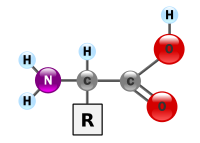
Photo from wikipedia
Cardiovascular disease is one of the most common causes of hospitalization and is associated with high morbidity and mortality rates. Among the most important modifiable and well-known risk factors are… Click to show full abstract
Cardiovascular disease is one of the most common causes of hospitalization and is associated with high morbidity and mortality rates. Among the most important modifiable and well-known risk factors are an unhealthy diet and sedentary lifestyle. Nevertheless, adherence to healthy lifestyle regimes is poor. The present study examined longitudinal trajectories (pre-event, 6-, 12-, 24-, 36-, and 60-month follow-ups) of protein intake (fish, legumes, red/processed meat) and physical activity in 275 newly-diagnosed patients with acute coronary syndrome. Hierarchical Generalized Linear Models were performed, controlling for demographic and clinical variables, the season in which each assessment was made, and the presence of anxiety and depressive symptoms. Significant changes in protein intake and physical activity were found from pre-event to the six-month follow-up, suggesting the adoption of healthier behaviors. However, soon after the six-month follow-up, patients experienced significant declines in their healthy behaviors. Both physical activity and red/processed meat intake were modulated by the season in which the assessments took place and by anxiety symptoms over time. The negative long-term trajectory of healthy behaviors suggests that tailored interventions are needed that sustain patients’ capabilities to self-regulate their behaviors over time and consider patient preference in function of season.
Journal Title: Nutrients
Year Published: 2021
Link to full text (if available)
Share on Social Media: Sign Up to like & get
recommendations!